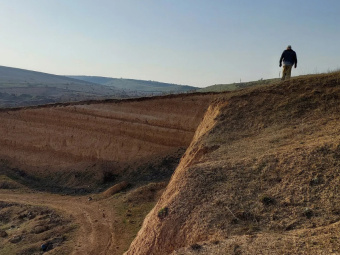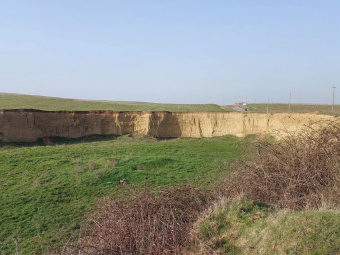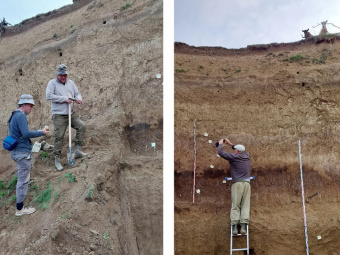Популярное
- Dagestan Tops Team Standings at Major Interregional Wrestling Tournament
- Dagestani Actor Kerim Magomedov Wins “Artistic Word” Category at “Victory Is One for All!” Festival
- Twelve Dagestan State University Students Win National “Alfa-Future” Scholarship Program
- Adyghe Dramatic Classic Staged in Dagestan
- Tourism Investments in Dagestan Surpass RUB 60 Billion in 2025
- Dagestan State Technical University Participates in All-Russian Congress on Youth Policy and Educational Activities
- Rostelecom and Dagestan’s Regional Management Center Conduct Digital Literacy Seminar
- Makhachkala to Host Fishery and Agricultural Fair on December 25 - 30
- Malaysian Ambassador Names Dagestan Among Regions That Left Best Impression on Him
- From Civilian to Tactical: "Armanda Plus" Earns "Brand of Dagestan" Title
Unique rocks first time discovered in Dagestan
|
|
1821
2 минуты
Russian scientists have discovered loess sediments in the southern part of Dagestan that have not been studied before. This discovery was reported by the Institute of Geography of the Russian Academy of Sciences. The unique rocks were found near the border with Azerbaijan, in the area where the Seaside Lowland and Eastern Caucasus regions are located.
The researchers found the most detailed series of loess soils near the village of Kurkent. They found seven levels of interglacial and interstadial paleosoils there. According to the scientists, these profiles belong to three periods: early, middle, and late Pleistocene. This period, also known as the Ice Age, began nearly 2.6 million years ago and ended 11,700 years ago.
Pavel Panin, a senior researcher at the Institute of Geography of the Russian Academy of Sciences, pointed out that loess rocks in Dagestan cover thousands of hectares of land. However, these rocks have rarely been mentioned in the literature. They are usually mentioned in connection with their use as agricultural soil enhancers and building materials.
Aa to Panin, the discovery is a unique natural archive that preserves data on climate change on Earth during the Quaternary epoch, which began with the Pleistocene and continues until the present day. Scientists have already collected samples for analysis of physical and chemical indicators.
Preliminary data suggests that the paleosoils date back to the Middle and Late Pleistocene, and were accumulated during periods of glaciation, as well as interrupted by warm periods during which soils formed. Loess allows for reconstruction and analysis of landscape and climatic conditions in past eras, according to researchers. This will not only allow for a better understanding of Earth's history, but also for making predictions about future planetary changes.
Photo by https://issp.pbcras.ru









